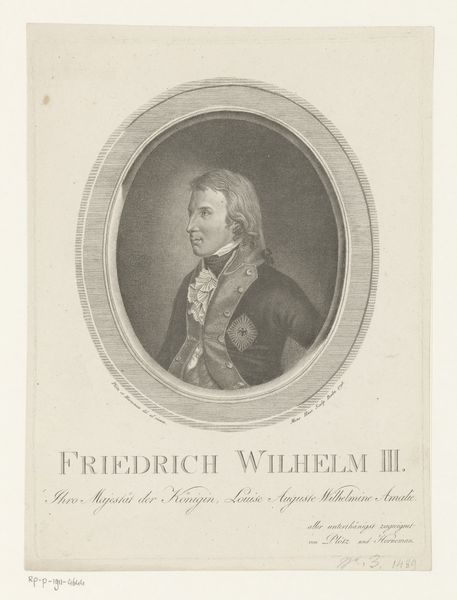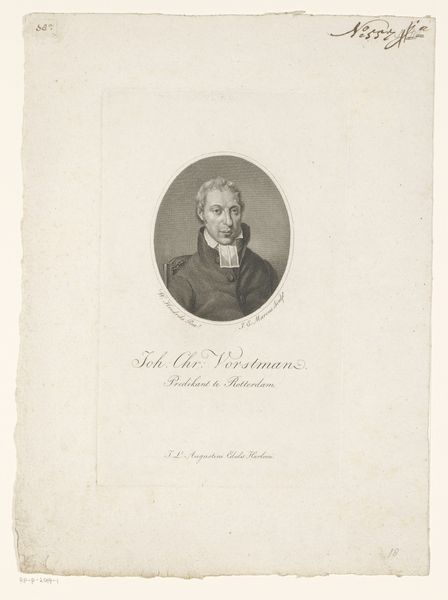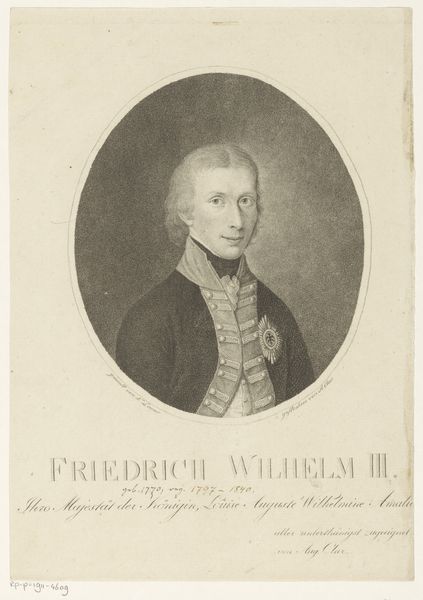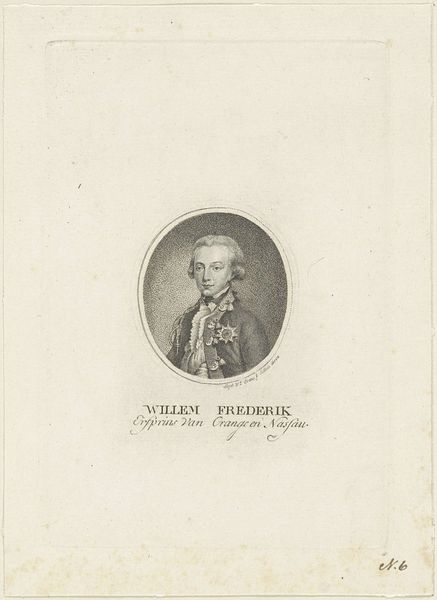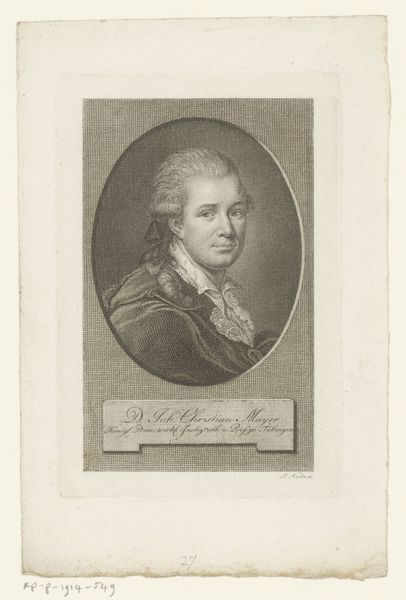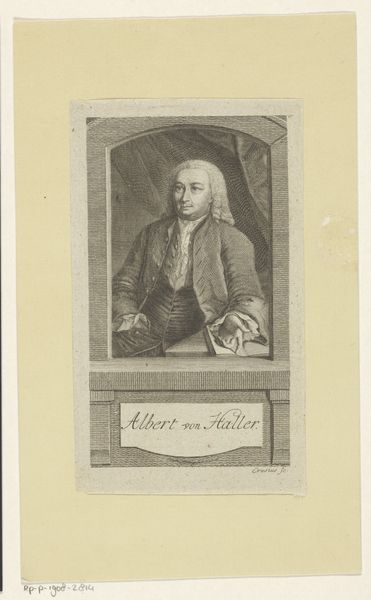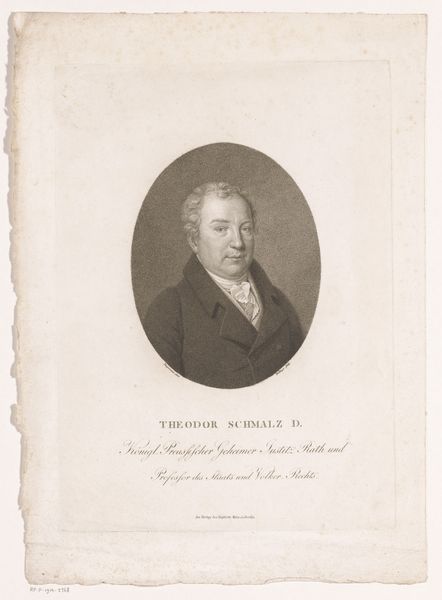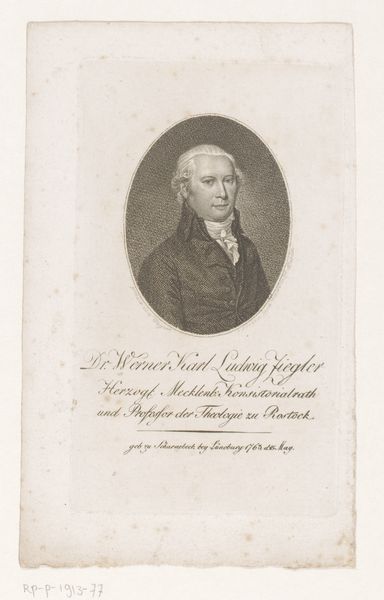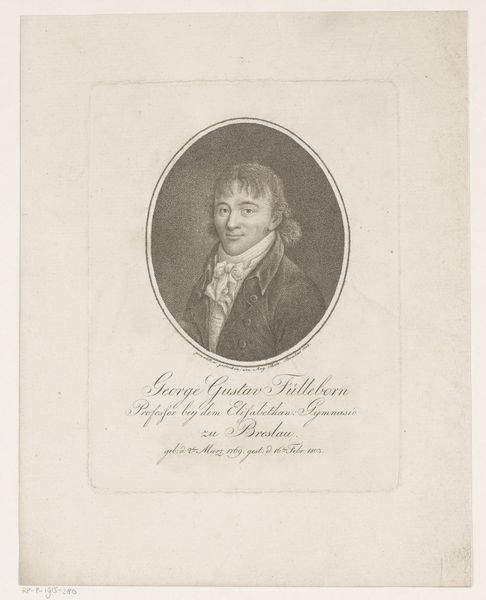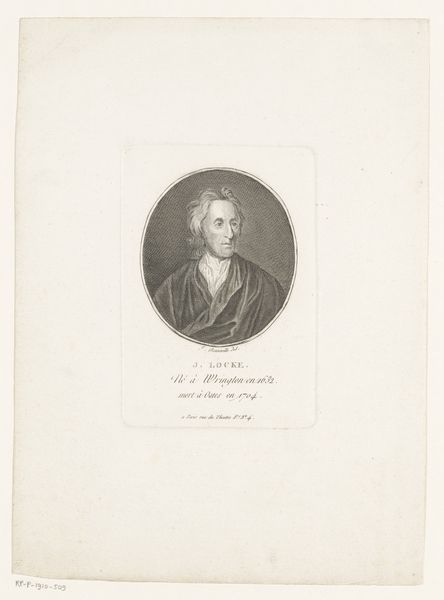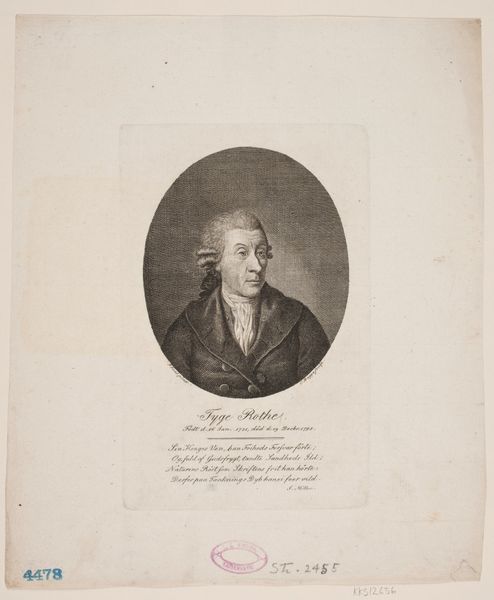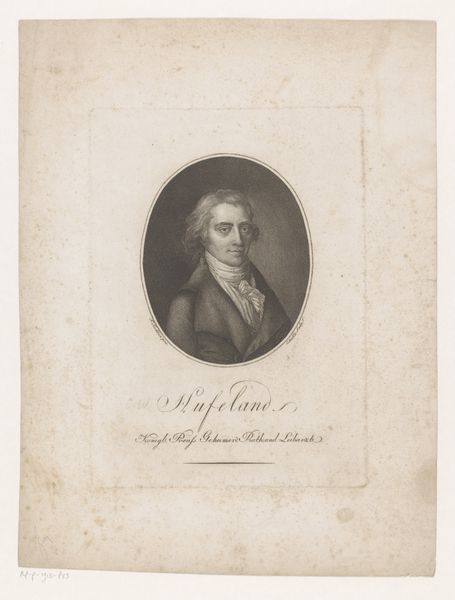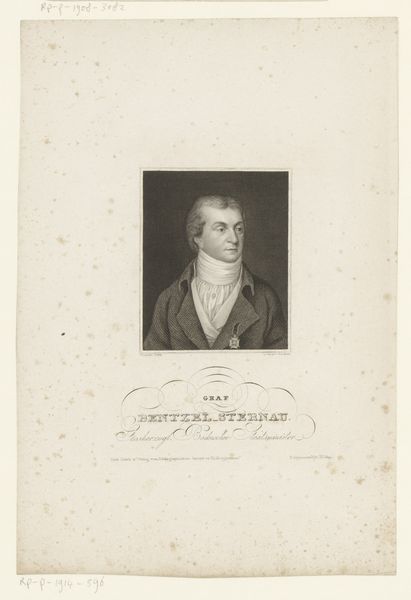
print, engraving
#
portrait
#
neoclacissism
# print
#
engraving
Dimensions: height 157 mm, width 98 mm
Copyright: Rijks Museum: Open Domain
This print of William Wilberforce was made in 1795 by Johann Friedrich Bolt, using a technique called etching. The etching process begins with a metal plate covered in a waxy ground. The artist scratches an image into this ground, exposing the metal. When acid is applied, it bites into the exposed lines, creating grooves. The deeper the bite, the more ink it will hold. After the ground is removed, the plate is inked, and then wiped clean, leaving ink only in the etched lines. Finally, the plate is pressed onto paper, transferring the image. The very nature of printmaking facilitated the wide dissemination of images, contributing to the formation of public opinion. This particular print depicts Wilberforce, a prominent figure in the movement to abolish slavery in Britain. The print medium allowed his image and ideas to circulate widely, underscoring the intersection of art, activism, and social change. By understanding the labor and material involved, we recognize the impact of the print on social and political discourse.
Comments
No comments
Be the first to comment and join the conversation on the ultimate creative platform.
